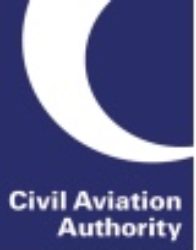Due to publication issues, Edition 24 of CAP413 has been withdrawn; Edition 23.1 and its associated supplementary instructions remains valid. Edition 24 will be (re) released in due course.
PPL TK eExam Price Increase
As of 1st April 2024 the UK CAA have increased their fees for PPL eExams 7.7% from £11.96 to £12.88 per exam, payable at time of booking.
Special Use Airspace Activity Information and Crossing Services
UK CAA has published Supplementary Instruction (CAP 413 SI 2024/01) which details changes being made to the Radiotelephony Manual (CAP 413) following the introduction of the Policy for the establishment and operation of Special Use Airspace (SUA), dated 12 February 2024.
This SI reflects the change in the naming of the Danger Area Activity Information Service (DAAIS) and Danger Area Crossing Service (DACS) to the new generic name Special Use Airspace (SUA) Crossing Service. This change to CAP 413 is largely editorial, and the radiotelephony calls used have not changed.
UK CAA Publishes CAP 413 Edition 24
The UK CAA has published the Radiotelephony Manual (CAP 413) Edition 24. This edition incorporates editorial changes and all Supplementary Instructions (SI) to December 2023. It is effective from 28 March 2024.
In addition to editorial changes and minor corrections, Edition 24 includes
updates in line with:
– Performance Based Navigation (PBN) approach naming;
– Phraseology for Required Navigation Performance (RNP) Instrument Approach Procedures (IAPs) at Aerodromes with Air / Ground Communication Service (AGCS);
– Movement Area Surface Condition Reporting;
– Flight Priorities;
– Radio Mandatory Zones (RMZ);
– Use of Cooperative Air Traffic Service (ATS) Surveillance Systems in Flight Information Service
– Police, Helicopter Emergency Medical Services (HEMS) and Search and Rescue (SAR) Callsigns; and
Multiple administrative updates to the military phraseology in Chapter 10.
UK CAA Safety Sense Leaflet 22 Radiotelephony for GA Pilots
The UK CAA has published a nice Safety Sense Leaflet. Safety Sense Leaflet 22 deals with radiotelephony for general aviation (GA) pilots. It discusses all the standard procedures for departure, en route and arrival along with radio failure and lost procedures.
UK CAA Talking Radio Telephony
The UK CAA has recently released this podcast which discusses radiotelephony from the perspective of two flight instructors who are also FRTOL examiners.
Clarity in Communications Theory Validity
Received from UK CAA on 24th November 2022
If the Communications theory examination paper is taken along with the other examinations for the issue of a LAPL, PPL or NPPL then the validity period is based on the whole examination set and the 24-month period starts from the final examination passed.
If the Communication theory examination paper is taken as a stand-alone examination (e.g. for the purposes of applying for the Flight Radio Telephony Operators Licence (FRTOL)) then the 24-month period starts from the date of successfully passing that examination paper.
Updated added on 25th May 2023
This is clarified on this web page.
Note: the paragraph under the heading ‘Initial Issue’ may need to be expanded to see the information.
Communications TK Exam Validity
This has recently come up in the context of applying for the FRTOL either on its own or at the same time as applying for a flight crew licence. It will look more like a complex legal argument than anything else but stick with me for a moment.
Generally, the length of time an examination remains valid for issuing a licence or rating is defined by FCL.025. Specifically, FCL.025 (c) states:
(c) Validity period
(1) The successful completion of the theoretical knowledge examinations will be valid:
(i) for the issue of a light aircraft pilot licence or a private pilot licence, for a period of 24 months;
and:
(iii) the periods in (i) and (ii) shall be counted from the day when the pilot successfully completes the theoretical knowledge examination, in accordance with (b)(2).
and, for completeness:
(b) Pass standards
(2) Unless otherwise determined in this Part, an applicant has successfully completed the required theoretical knowledge examination for the appropriate pilot licence or rating if he or she has passed all the required theoretical knowledge examination papers within a period of 18 months counted from the end of the calendar month when the applicant first attempted an examination.
There are currently two interpretations of FCL.025:
Interpretation 1
FCL.025(c)(1)(iii) states that the ’24-month period’ referred to in FCL.025 (c)(1)(i) starts when the pilot successfully completes the theoretical knowledge examination (note the use of the singular ‘examination’), in accordance with (b)(2).
Section (b)(2) states that the successful completion of the theoretical knowledge ‘examination’ means passing all the required theoretical knowledge ‘examination papers’ within a period of 18 months counted from the end of the calendar month when the applicant first attempted the ‘examination’.
In essence, then, the ‘successful completion’ clock starts ticking from the end of the calendar month when the applicant first attempted an ‘examination’. The clock finishes 18 months later.
That leads us to need to look at the definition of the term ‘examination’ and FCL.025 has some helpful guidance material (i.e. soft law / best practice) in GM1 which states:
(b) ‘Examination’: the demonstration of knowledge in one or more examination papers.
(c) ‘Examination paper’: a set of questions, which covers one subject required by the licence level or rating, to be answered by a candidate for examination.
When these two definitions are read together with each other these terms mean that an ‘examination’ consists of one or more “examination papers’
In summary, then, an applicant starts the ‘examination’ and an 18-month countdown clock starts ticking at the end of the calendar month during which the applicant first attempted the ‘examination’, which by implication means the first ‘examination paper’. The ‘examination’ finishes after the applicant successfully passes the last ‘examination paper’ and has de facto successfully completed the ‘examination’. On this ‘day’ [see FCL.025 (c)(1)(ii) above] a 24-month countdown timer starts during which time the applicant must successfully pass the FRTOL practical.
Interpretation 2
All that stuff above is dancing on the head of a pin and for the purposes of the FRTOL practical, the 24-month countdown clock starts the day the applicant passes the Communications theory examination – full stop!
Suffice it to say, that when I asked this question during my FRTOL Examiner Assessment of Competence (EAoC) the UK CAA FRTOL Chief Examiner helpfully clarified this by stating that Interpretation 2 was the correct interpretation because the FRTOL is a separate licence irrespective of whether it is applied for in isolation or at the same time as a flight crew licence.
Furthermore, to do otherwise would mean that there were different TK validity rules when applying only for the FRTOL in isolation as opposed to at the same time as a flight crew licence.
UK CAA Website
The latest but perhaps not last chapter is information on the CAA Website. Looking under ‘Exam Validity’ it states:
If you take the Radiotelephony Communications test together with the theoretical exams for the issue of a PPL, LAPL or NPPL licence all exams must be passed within an 18-month period.
The Communications examination will then be valid for 24 months following the final theoretical examination.
Thanks to Charlie at Devon & Somerset Flight Training for spotting that this advice had been added to the CAA website.
GASCo Airspace Infringement Avoidance Webinar – 7th November 2022
The General Aviation Safety Council (GASCo) held a webinar recently on the subject of airspace infringements. There was a lot of useful information much of which related to the use of RTF including Frequency Monitoring Codes (FMC) aka ‘listening squawks, what to do when lost, planning your flight (including frequencies that you may need) DACS, DAAIS, ATSOCAS etc etc.
The recording can be watched here.
Also present was Amanda Rhodes (Air Traffic Controller, Luton and Stansted). Amanda’s talk (starting at 32:00 mins into the online session) was very interesting as it was from the perspective of the air traffic controller. A great deal of RTF training is understanding the view from ‘the other side’, as having this empathy helps when planning your flight and making requests to, for example cross controlled airspace.
There were a couple of reference made to ‘sounding slick’ over the radio in order to maximise your chances of getting a clearance. I am not sure I agree 100% with that. At least in my experience the controllers do all they can to assist those pilots who appear to be less confident.
Back in 2004, my friend and I flew an identical route through London City, Stansted, Luton, Heathrow, Solent and Gatwick airspace initially in his Aztec with me on the radio in my then rather unconfident PPL manner and then again in my C172 with his rather more confident ATPL manner. The result…the same clearance were given and the pretty much the same route flown. Flyer published the article and I have uploaded it here.
Renewing your expired FRTOL?
The pages related to renewing your expired FRTOL have been updated, read the latest here.

